Engineering Notes
Motor Sizing Basics Part 2: How to Calculate Load Inertia
Other than torque or speed, another factor should be considered when sizing motors.
 Have you ever wondered why the wheels and tires of a racing bicycle are different from a mountain bike? That is because racing bicycles use lighter, thinner wheels for performance. The lighter, thinner wheels reduce the moment of inertia of the wheels; making it a little easier to peddle. In racing where milliseconds count, a little means a lot.
Have you ever wondered why the wheels and tires of a racing bicycle are different from a mountain bike? That is because racing bicycles use lighter, thinner wheels for performance. The lighter, thinner wheels reduce the moment of inertia of the wheels; making it a little easier to peddle. In racing where milliseconds count, a little means a lot.| What is "Inertia"? |
| What is "Load Inertia"? |
| What is "Permissible Load Inertia" and "Inertia Ratio"? |
Example: Recommended Permissible Inertia Ratios
| Motor Type | Frame Size (mm) | Frame Size (NEMA) | Inertia Ratio |
| Open-Loop Stepper Motors | 20, 28, 35 | 8, 11, 14 | 5:1 or less |
| Open-Loop Stepper Motors | 42, 50, 56.4, 60, 85 | 17, 20, 23, 24, 34 | 10:1 or less |
| Closed-Loop Stepper Motors | - | - | 30:1 or less |
| Servo Motors (Auto Tuning) | - | - | 50:1 or less |
| Servo Motors (Manual Tuning) | - | - | 100:1 or less |
| TIP: If you need to exceed the load inertia ratio... |
| Remember that this is a safe guideline and these values can be exceeded with the right setup. I remember talking to someone who was building slot machines for casinos (the old kind with a lever). His team was using a stepper motor to spin the cylinders that determined if you kept your day job or not. With the right motion profile, a slow acceleration and deceleration ramp, and repeated testing, they were able to use a motor that exceeded these permissible values...by a lot. |
| How to Calculate Load Inertia? |
Fundamental Inertia (J) Equation
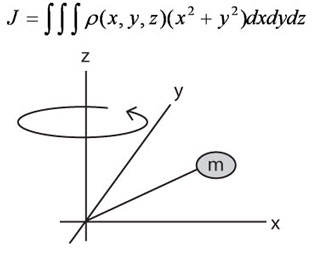
Don't worry. There are simplified forms of this formula. Five different simplified equations for five common loads (objects) are shown below for solid cylinder, hollow cylinder, rectangular object, rectangular object with off-center axis, and object in linear motion.
Choose the appropriate equation based on:
Shape of load (object) in motion
Rotational axis (x or y)
Details provided (do you have the weight of the load?)
For example, if weight is provided, and you're calculating for a solid cylinder rotating about its x axis, use the first equation (Jx) below (with mass "m"). If the weight is not provided, but you have the diameter, thickness, and material density of the load, then the load inertia can be calculated with the second equation (Jx) below (with density "p").
Inertia of a Cylinder or Disc (as from the x or y axis)
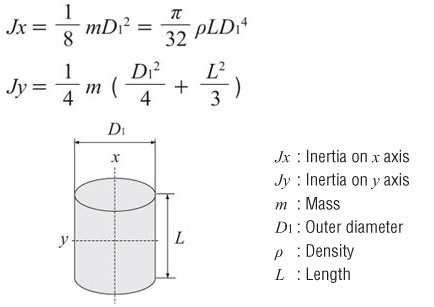
Inertia of a Hollow Cylinder (as from the x or y axis)
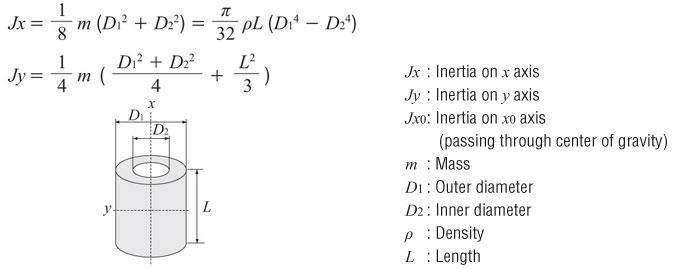
Inertia of a Rectangular Object (as from the x or y axis)
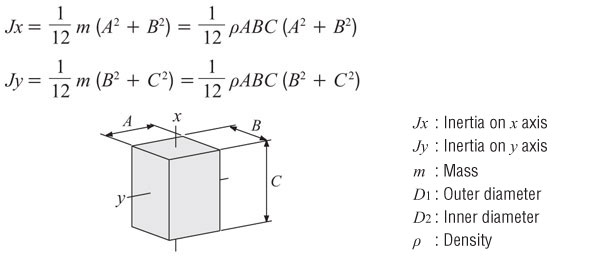
Inertia of a Rectangular Object with Off-Center Axis

Inertia of an Object in Linear Motion
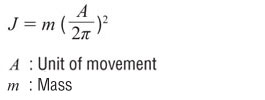
| Unit of Measure |
Oriental Motor commonly provides inertia in oz-in². Then, when we calculate the acceleration torque, we divide the total inertia by gravity.
Gravity = 386 in/sec²
oz-in² = Inertia based on weight
oz-in-sec² = inertia based on mass
Conversion from oz-in² to oz-in-sec²

To complete these calculations, you may need some extra info such as material density to complete your calculations. This is necessary to calculate the weight of an object. More can be found with a simple online search.
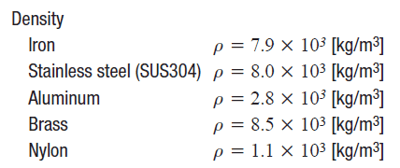
| Example: Load Inertia Calculation |
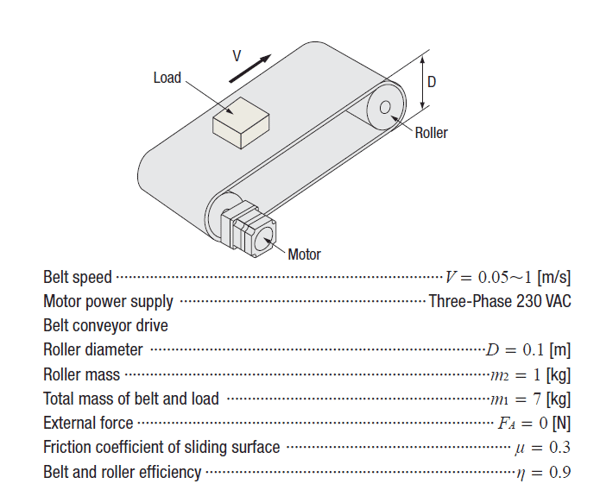
You'll need to add up all the load inertia values of all components driven by the motor. This includes the load, the belt, and the rollers. You'll need to use 2 different equations.
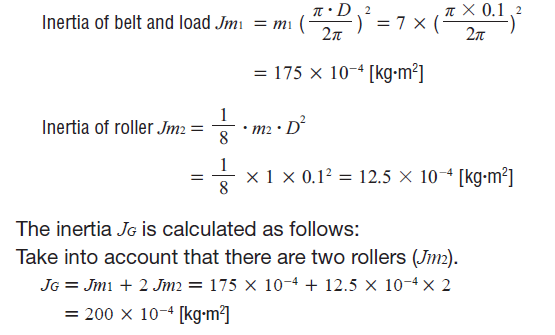
From what we've learned in Motor Sizing Basics Part 1 - Load Torque, here's the load torque calculation.

| Dealing with Large Load Inertia? Use a Geared Motor |

If you're interested in learning more, here's a white paper that discusses how to use gearheads to reduce load inertia. This is specifically for stepper motors.
White Paper: How to Address Increased Loads in Both Size and Weight with a Stepper Motor
| Where Can I Find "Permissible Load Inertia"? |
Here's an example of a permissible load inertia chart for a BLE2 Series 200/400 W brushless motor (from our catalog). Since we've already calculated the maximum permissible load inertia values for each gear ratio, you don't have to. Try not to exceed these values. The motors may still work if these values are exceeded, but it cannot be guaranteed.

If you don't have our catalog, we also list the permissible load inertia value on the website.

For stepper motors or servo motors, permissible load inertia values are not published, so please use recommended inertia ratio guidelines.
That's it for load inertia for now. Remember that load inertia is just one of three calculations necessary for a successful motor sizing (don't forget torque and speed). In the next Motor Sizing Basics post, I will explain how load inertia affects another component of torque - acceleration torque, which is also important in determining the total torque requirement for an application (and is the main reason to why racing bikes peddle easier than regular bikes).
Need a refresher? Here's the motor sizing white paper (from the last post).
Learn more about motor sizing calculations
In the next post, I will explain how to calculate acceleration torque, RMS torque, and speed.







No comments:
Post a Comment
Thank you for Contacting Us.